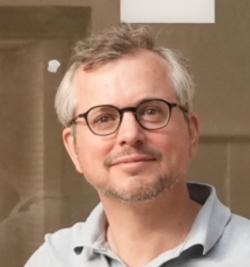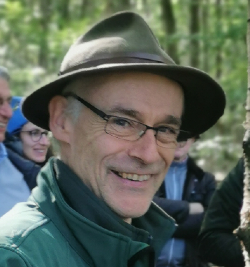Forest therapy for positive mental health states
The European project Forest4Youth was born from the collaboration between the Saint-Martin Neuropsychiatric Center and the Royal Forestry Society of Belgium (RFSB), to reconnect young people with nature.
This initiative aims to offer hospitalized young people an immersive forest experience, responding to a growing need for innovative mental health solutions. Recognized for its innovative approach, the project was featured in a dedicated article on Planet Health, highlighting the richness of this collaboration between caregivers and foresters.
Find the exchange between the two protagonists below:

Dr. François Xavier Polis
head of the adolescent care unit L’Athanor at CNP Saint-Martin

Philippe de Wouters
Director of the RFSB
How did this project come about?
Dr. François-Xavier Polis, head of the adolescent care unit L’Athanor at CNP Saint-Martin: “The initial observation was that teenagers in our unit tended to withdraw to their rooms, which led us to fear the re-creation of a sort of confinement within the ward. We therefore wanted to imagine several initiatives that would bring these young people outdoors. This idea was born from my meeting with Philippe de Wouters, co-owner of a truly enchanting forest in Walloon Brabant, where a very special atmosphere prevails.”
Philippe de Wouters, Director of the RFSB: “Our experience as foresters is to work in a complex and living ecosystem. Hence our desire to take young people out of their four walls and integrate them into a vibrant environment where everyone, young and old alike, has their place.”
Have these forest therapies already proven their effectiveness?
Dr. Polis: “I prefer to speak in terms of experience rather than results. The aim is not for the young people to serve as guinea pigs to observe the effects at all costs, but rather to make the most of this time in the forest and the disconnection from time and screens so that something happens – something in the realm of wonder.”
What actions are planned in this 4-year project?
Ph. de Wouters: “From the forestry side, it’s about testing different activities with the youth to identify which will have the most impact on them. But our approach to therapeutic forests – which can provide defined health benefits – also extends to urban green spaces: the forest alone couldn’t absorb the volume of potential demand. Therefore, it is essential in our project to involve these urban green spaces, especially since the planned activities can be short in duration. Likewise, augmented reality is part of the project to also make this nature and its effects accessible to those who can’t experience it directly, for example if they are hospitalized.”
Is the participation of foresters in this project important for caregivers?
Dr. Polis: “In the company of a forester, one’s view of the forest truly opens up. You can feel the desire for sharing and passing on knowledge. Without foresters, our project would be hollow. At the same time, I was also eager to share our daily practice after two years of experience. Furthermore, thanks to this European fund, we look forward to meeting other project teams that can enrich our practices.”
Ph. de Wouters: “Our wish is that the forest is not considered a consumer product, but rather a living whole in connection with young people. In consultation with the therapists and the forester involved in this project, we also want the young people to leave having accomplished something useful and good for the forest. Because for the forest to do us good, it must also be in good health.”
Hence the importance of good intersectoral collaboration?
Ph. de Wouters: “It is the intersection point of two sectors that, at first glance, have nothing to do with each other. The greatest outcome is to be able to create something coherent between two worlds by identifying common interests, which they must consolidate to build similar projects in the future.”
Dr. Polis: “It is important to make it clear that psychiatry is not only about medication and confinement, but also about going into the forest with young people, with the ambition that this pilot project can spread a little everywhere.”
